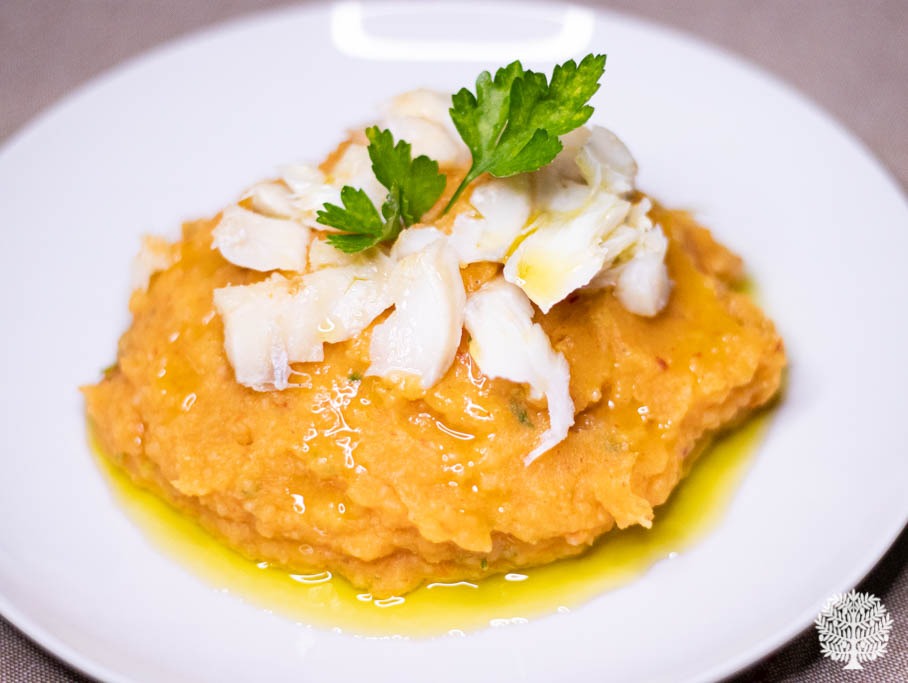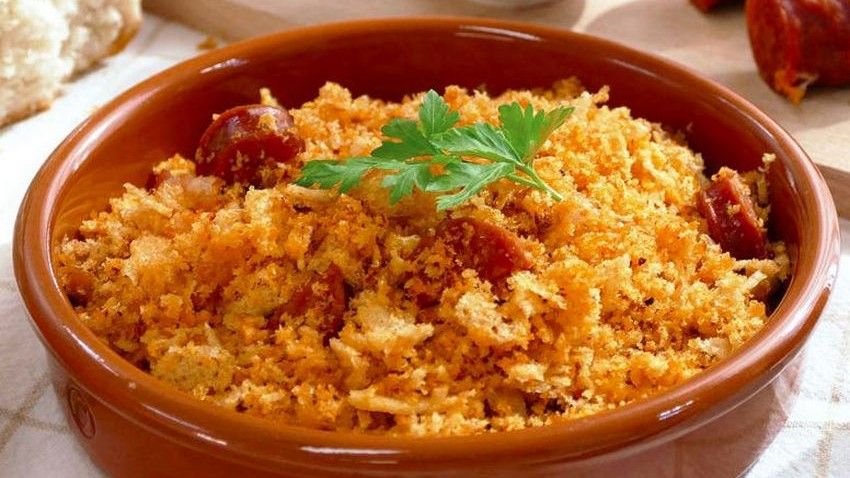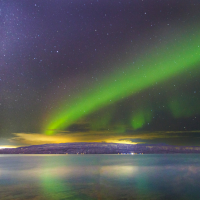La Vuelta 2022 - Stage 11:- ElPozo Alimentación - Cabo de Gata, 191.2km ***Spoilers***

blazing_saddles
Posts: 22,728
in Pro race
Stage 11:- ElPozo Alimentación - Cabo de Gata, 191.2km
August 31, 2022
Start Time: 12-35CET.
Stage 11 at la Vuelta adds up to 191.2 kilometres, over an undulating course with an elevation gain of roughly 1,600 metres, on the way from Alhama de Murcia to the natural park of Cabo de Gata. The fast men are unlikely to let this chance pass them by. The stage gets underway from Alhama de Murcia, or more accurately, from the ElPozo Alimentación factory on the outskirts of town.

The riders click into their pedals near the HQ of ElPozo Alimentación, which is the most consumed food brand in Spanish households. The Vuelta’s nod to the producer of fresh, processed and cured meats is part of a grand tradition of honouring sponsors on the race route.
The race’s fleeting visit to Murcia will also form part of Alejandro Valverde’s long goodbye to the Vuelta and to professional cycling, even if the terrain is not suited to the local favourite’s talents.

Final Kms.
The riders leave Alhama de Murcia to head south on undulating terrain. The finish lies in the Cabo de Gata Natural Park in the deep south of Spain, close to Almería.

What to Expect:
Instead, the largely flat run into neighbouring Almeria is tailored expressly for the sprinters. Although there are some undulations on the long road south, a bunch sprint seems inevitable in Cabo de Gata, which is perched on Andalucia’s wildest and most isolated stretch of coastline.
ElPozo Alimentación
With almost a century of history behind it, ElPozo is one of Spain’s most recognisable brands within the food industry. The company was founded in 1954, and has its roots in a delicatessen opened in Alhama de Murcia in 1936. As the winner of the European Sport and Health Company Award in 2017 (it is the only Spanish company to have won this), ElPozo’s ties to sport are undeniable. Proof of this was its debut as a finish-line in La Vuelta 17. Its name is closely-linked to the Region of Murcia, which it promotes all over the world as one of its greatest ambassadors.


Cabo de Gata
Population 201,332
Cabo de Gata-Níjar Natural Park in the southeastern corner of Spain is Andalusia's largest protected coastal area, a wild and isolated landscape. Due to its beaches and wild cliffs, Cabo de Gata has become a reference among tourist destinations in recent years, with thousands of tourists visiting it each year. With its volcanic origins and status as a Natural Park for the past 35 years, this geographic accident possesses an immense wealth of flora and fauna. Its lighthouse and iconic natural Sirenas (or Mermaid) reef, are two symbols of the province of Almería.

The maritime reserve is home to various species of crustaceans, molluscs, and fishes including the common cuttlefish (Sepia officinalis), the Pinna nobilis clam that produces sea silk, the Mediterranean moray (Muraena helena) that was regarded as a delicacy by the Romans, the garfish (Belone belone), and flying gurnard (Dactylopterus volitans), which uses its enlarged pectoral fins to "walk" along the ocean floor. Seaweeds host fish such as bream and grouper.

Calamares en aceite – This is very tender. Slow cooked in olive oil and white wine, with a touch of garlic.

Ajo colorao – A fish stew made with mashed potatoes, dried red peppers and cumin.

Migas made from semolina. This dish looks like cous cous. Usually served with green peppers, chorizo and other ingredients.

August 31, 2022
Start Time: 12-35CET.
Stage 11 at la Vuelta adds up to 191.2 kilometres, over an undulating course with an elevation gain of roughly 1,600 metres, on the way from Alhama de Murcia to the natural park of Cabo de Gata. The fast men are unlikely to let this chance pass them by. The stage gets underway from Alhama de Murcia, or more accurately, from the ElPozo Alimentación factory on the outskirts of town.

The riders click into their pedals near the HQ of ElPozo Alimentación, which is the most consumed food brand in Spanish households. The Vuelta’s nod to the producer of fresh, processed and cured meats is part of a grand tradition of honouring sponsors on the race route.
The race’s fleeting visit to Murcia will also form part of Alejandro Valverde’s long goodbye to the Vuelta and to professional cycling, even if the terrain is not suited to the local favourite’s talents.

Final Kms.
The riders leave Alhama de Murcia to head south on undulating terrain. The finish lies in the Cabo de Gata Natural Park in the deep south of Spain, close to Almería.

What to Expect:
Instead, the largely flat run into neighbouring Almeria is tailored expressly for the sprinters. Although there are some undulations on the long road south, a bunch sprint seems inevitable in Cabo de Gata, which is perched on Andalucia’s wildest and most isolated stretch of coastline.
ElPozo Alimentación
With almost a century of history behind it, ElPozo is one of Spain’s most recognisable brands within the food industry. The company was founded in 1954, and has its roots in a delicatessen opened in Alhama de Murcia in 1936. As the winner of the European Sport and Health Company Award in 2017 (it is the only Spanish company to have won this), ElPozo’s ties to sport are undeniable. Proof of this was its debut as a finish-line in La Vuelta 17. Its name is closely-linked to the Region of Murcia, which it promotes all over the world as one of its greatest ambassadors.


Cabo de Gata
Population 201,332
Cabo de Gata-Níjar Natural Park in the southeastern corner of Spain is Andalusia's largest protected coastal area, a wild and isolated landscape. Due to its beaches and wild cliffs, Cabo de Gata has become a reference among tourist destinations in recent years, with thousands of tourists visiting it each year. With its volcanic origins and status as a Natural Park for the past 35 years, this geographic accident possesses an immense wealth of flora and fauna. Its lighthouse and iconic natural Sirenas (or Mermaid) reef, are two symbols of the province of Almería.

The maritime reserve is home to various species of crustaceans, molluscs, and fishes including the common cuttlefish (Sepia officinalis), the Pinna nobilis clam that produces sea silk, the Mediterranean moray (Muraena helena) that was regarded as a delicacy by the Romans, the garfish (Belone belone), and flying gurnard (Dactylopterus volitans), which uses its enlarged pectoral fins to "walk" along the ocean floor. Seaweeds host fish such as bream and grouper.

Calamares en aceite – This is very tender. Slow cooked in olive oil and white wine, with a touch of garlic.
Ajo colorao – A fish stew made with mashed potatoes, dried red peppers and cumin.

Migas made from semolina. This dish looks like cous cous. Usually served with green peppers, chorizo and other ingredients.

"Science is a tool for cheaters". An anonymous French PE teacher.
3
Comments
-
Going to be a long day for the commentators!0
-

Last 4km flat along the coast past salt flats.
Should be a very intense last 15km for the remaining sprinters and podium hopefuls.1 -
Simon Yates out with Covid0
-
Pavel Sivakov too0
-
Oh no. Hope it doesn't decimate the GC contenders further.PTP Champion 2019, 2022 & 20230
-

Three kern pharma riders have also had their numbers selected in today's draw.0 -
Sub 100 finishers on the cards ."If I was a 38 year old man, I definitely wouldn't be riding a bright yellow bike with Hello Kitty disc wheels, put it that way. What we're witnessing here is the world's most high profile mid-life crisis" Afx237vi Mon Jul 20, 2009 2:43 pm0
-
Total lottery"If I was a 38 year old man, I definitely wouldn't be riding a bright yellow bike with Hello Kitty disc wheels, put it that way. What we're witnessing here is the world's most high profile mid-life crisis" Afx237vi Mon Jul 20, 2009 2:43 pm0
-
-
Not too sure I'd be happy as rider or DS being interviewed by someone who isn't even going to wear a mask. Not saying it would of prevented anything, but at least it'd be nice to see the journalists taking it seriously.2
-
Seeing Remco riding quality riders off his back wheel has been impressive. So the last few km of the summit finishes have been good.rick_chasey said:Honest question, other than the TTT I have not watched this race - have I missed out?
0 -
Surprised the break is not just the remaining Kern pharma team as everyone else said " please go ahead"!0
-
I think Kirby’s been at the glue.
Utter made up nonsense in every sentence.
“Mas takes a lot of criticism from French fans” wtf?
“Valverde isn’t attack mode minded”.
No obviously not. That’s why he’s won so many races.
And despite the absence of white caps and the fact that all the beach folk are watching the race go by, the beaches are quiet because they are getting sand blasted.
Dumber than a bag of spanners."Science is a tool for cheaters". An anonymous French PE teacher.0 -
Desperation for the commentary team as they are 15 minutes behind slowest schedule.0
-
Alaphillipe crashes out of another race."Science is a tool for cheaters". An anonymous French PE teacher.0
-
Broken collarbone by the looks and it’s bye bye to defending his rainbow jersey."Science is a tool for cheaters". An anonymous French PE teacher.1
-
Joy for @iainf72 globallyblazing_saddles said:Broken collarbone by the looks and it’s bye bye to defending his rainbow jersey.
(not really fair on Iain, but couldn't waste the opportunity)Warning No formatter is installed for the format0 -
Been a hot slog ...."If I was a 38 year old man, I definitely wouldn't be riding a bright yellow bike with Hello Kitty disc wheels, put it that way. What we're witnessing here is the world's most high profile mid-life crisis" Afx237vi Mon Jul 20, 2009 2:43 pm0
-
Time once again to press the mute button"Science is a tool for cheaters". An anonymous French PE teacher.0
-
Ben giving it some head"If I was a 38 year old man, I definitely wouldn't be riding a bright yellow bike with Hello Kitty disc wheels, put it that way. What we're witnessing here is the world's most high profile mid-life crisis" Afx237vi Mon Jul 20, 2009 2:43 pm0
-
Groves finishes off some great work from his team.0
-
Lol.., entertaining sprint"If I was a 38 year old man, I definitely wouldn't be riding a bright yellow bike with Hello Kitty disc wheels, put it that way. What we're witnessing here is the world's most high profile mid-life crisis" Afx237vi Mon Jul 20, 2009 2:43 pm0
-
BEX deserved it"If I was a 38 year old man, I definitely wouldn't be riding a bright yellow bike with Hello Kitty disc wheels, put it that way. What we're witnessing here is the world's most high profile mid-life crisis" Afx237vi Mon Jul 20, 2009 2:43 pm0
-
Good last 10km that.0
-
Cor, that raging crosswind they talked about all stage sure did rip the peloton to pieces…."Science is a tool for cheaters". An anonymous French PE teacher.0
-
How comes Geraint and others get stick for crashing a lot whereas Alaphillipe regularly gets referred to as an excellent bike handler?blazing_saddles said:Alaphillipe crashes out of another race.
0 -
It'sa good question, not sure.Pross said:
How comes Geraint and others get stick for crashing a lot whereas Alaphillipe regularly gets referred to as an excellent bike handler?blazing_saddles said:Alaphillipe crashes out of another race.


Some of them make for good photos though.1 -
Peloton needed a lazy day ."If I was a 38 year old man, I definitely wouldn't be riding a bright yellow bike with Hello Kitty disc wheels, put it that way. What we're witnessing here is the world's most high profile mid-life crisis" Afx237vi Mon Jul 20, 2009 2:43 pm0
-
In the choppy footage it looks like Plapp crashing (in typical Ineos fashion 😉) exactly in front of Alaphilippe and Alaphilippe then going over the handlebars.Pross said:
How comes Geraint and others get stick for crashing a lot whereas Alaphillipe regularly gets referred to as an excellent bike handler?blazing_saddles said:Alaphillipe crashes out of another race.
PTP Champion 2019, 2022 & 20230







